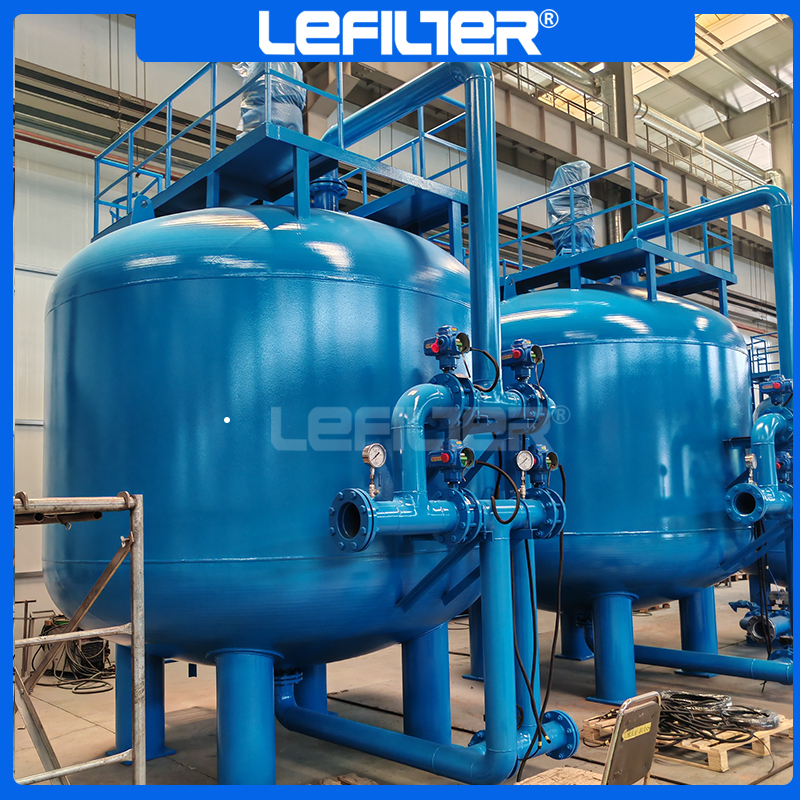Integrated Water and Air Filtration: A Holistic Approach to Plant Optimization
DATE:2024-12-09 Number of views: 1 Source:dongwenhui
In the intricate ecosystem of power plants, the optimization of operational systems is paramount for ensuring efficiency, reducing costs, and maintaining compliance with environmental regulations. Traditionally, water and air filtration systems were treated as separate entities. However, the advent of integrated filtration approaches is transforming the way plants manage contamination, safeguarding turbines, cooling towers, and emissions systems.
We delve into the benefits of combining water and air filtration systems, highlighting how this holistic strategy enhances plant performance and sustainability.
The Role of Filtration Systems in Power Plants
Filtration is a cornerstone of power plant operations. Both water and air filtration systems perform essential roles:
Water Filtration
Water is used extensively in power plants for cooling, steam generation, and cleaning. Filtration systems remove impurities such as sediments, dissolved minerals, and biological contaminants that could harm equipment like turbines and condensers.Air Filtration
Airborne contaminants, including dust, pollen, and industrial particulates, can compromise the efficiency of turbines and contribute to emissions. Air filtration systems ensure clean air supply and reduce the release of pollutants into the environment.
Benefits of Integrating Water and Air Filtration Systems
1. Comprehensive Equipment Protection
Integrated filtration systems create a unified defense mechanism against contaminants that affect both air and water systems. This approach prevents cross-contamination and enhances the durability of critical components, including:
Turbines: Protected from air particulates and waterborne debris.
Cooling Towers: Shielded from biological growth and airborne debris.
Emissions Systems: Operate efficiently with reduced pollutants in both input air and discharge water.
2. Enhanced Plant Efficiency
Integrated systems optimize the overall performance by reducing energy loss associated with fouled components. Clean air and water contribute to better heat transfer, efficient combustion, and minimal downtime for maintenance.
3. Simplified Maintenance and Monitoring
Combining water and air filtration systems streamlines maintenance by:
Using shared monitoring equipment for real-time data on system performance.
Reducing the frequency of component replacements through coordinated cleaning schedules.
4. Improved Environmental Compliance
Integrated systems facilitate compliance with stringent environmental regulations by:
Reducing harmful emissions through efficient air filtration.
Ensuring wastewater meets discharge standards with effective water treatment.
5. Cost Savings
While the initial setup may be higher, integrated filtration systems reduce long-term operational costs by lowering energy consumption, minimizing equipment wear, and avoiding regulatory fines.
Key Components of Integrated Filtration Systems
Hybrid Filters
These filters combine technologies like activated carbon and HEPA to manage both water and air contaminants.IoT-Enabled Systems
Smart filtration systems provide real-time insights into both water and air quality, enabling predictive maintenance and quick responses to contamination.Advanced Filtration Media
Nanofiber membranes and high-performance cartridges ensure high precision in removing particles from water and air streams.Modular Designs
Modular systems offer flexibility, allowing plants to scale operations and adapt to specific contamination challenges.
Applications in Different Power Plant Types
1. Fossil Fuel Plants
These plants deal with significant air and water contamination. Integrated systems can:
Manage ash and slag particles in air and water.
Ensure efficient cooling and emission reduction.
2. Nuclear Power Plants
Water purity is critical for nuclear reactors. Integration ensures:
Clean air for operational safety.
Pristine cooling water to avoid corrosion and scaling.
3. Renewable Energy Facilities
Solar, wind, and hydropower plants benefit from integrated systems by maintaining optimal equipment performance and reducing environmental footprints.
Challenges in Integration
1. High Initial Costs
Combining water and air filtration systems requires significant investment in equipment and installation.
2. System Compatibility
Existing infrastructure may need modifications to accommodate integrated systems, increasing complexity.
3. Expertise Requirements
Staff must be trained to manage and maintain advanced integrated systems effectively.
These challenges, however, are outweighed by long-term benefits, including cost savings and enhanced performance.
Case Study: Integration in a Combined Cycle Plant
A combined cycle gas plant faced inefficiencies due to fouling in turbines and cooling towers. The plant adopted an integrated filtration approach, installing nanofiber air filters and ultrafiltration systems for cooling water.
Results:
Efficiency Gains: Turbine output increased by 12% due to reduced fouling.
Cost Savings: Maintenance costs dropped by 20% annually.
Compliance: The plant met stricter emission and water quality regulations.
This example illustrates the transformative potential of integrating water and air filtration systems.
Future Trends in Integrated Filtration
Artificial Intelligence in Filtration
AI algorithms will predict contamination levels, enabling proactive system adjustments.Sustainable Filtration Materials
Eco-friendly materials, like bio-based membranes, will become more prevalent, reducing the environmental impact of filtration systems.Global Standards for Integration
Harmonized regulations may drive the adoption of integrated systems, particularly in developing regions.Energy Recovery Technologies
Systems that harness energy from filtration processes will further enhance cost-effectiveness.
FAQ
What is an integrated filtration system?
An integrated filtration system combines water and air filtration to provide comprehensive contamination control in power plants.Why should power plants integrate water and air filtration systems?
Integration ensures better equipment protection, enhanced efficiency, and simplified maintenance.What are the main challenges of integrating filtration systems?
High upfront costs, infrastructure compatibility, and the need for skilled personnel are key challenges.How do integrated systems benefit environmental compliance?
They reduce harmful emissions and ensure wastewater meets discharge standards, helping plants adhere to regulations.What types of filters are used in integrated systems?
Hybrid filters, nanofiber membranes, and modular systems are commonly employed.Can integrated filtration systems be retrofitted into existing plants?
Yes, with proper planning, existing plants can adapt to integrated filtration systems.Are integrated systems suitable for renewable energy plants?
Absolutely. They enhance efficiency and reduce the environmental impact of solar, wind, and hydropower facilities.What is the ROI for integrated filtration systems?
ROI typically depends on plant size and operational challenges, but long-term savings often justify the initial investment.


